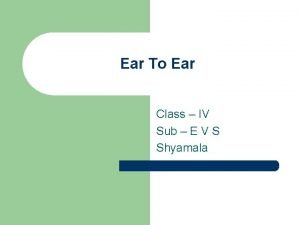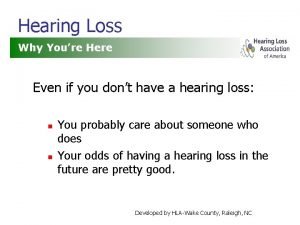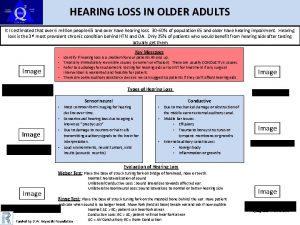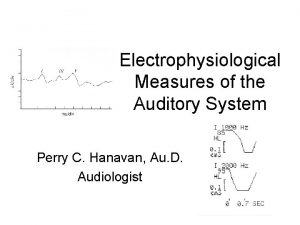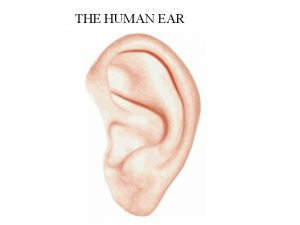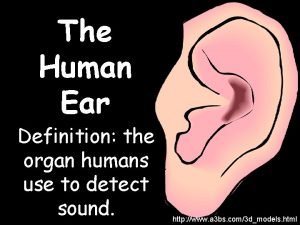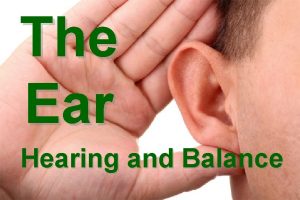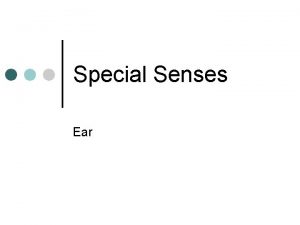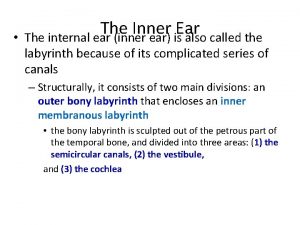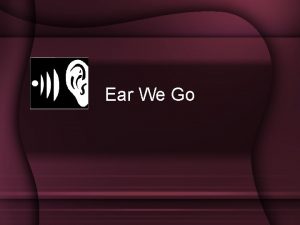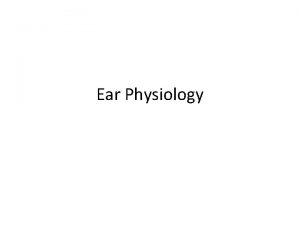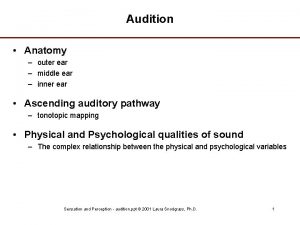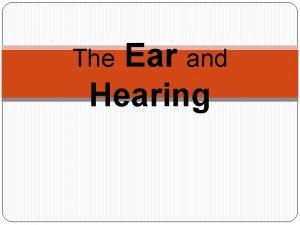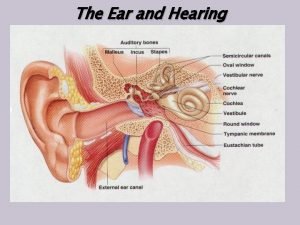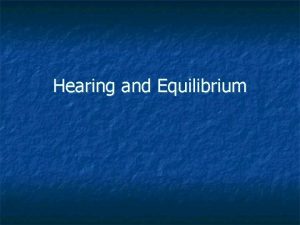Hearing Hearing Loss and the Human Ear Hearing














- Slides: 14

Hearing, Hearing Loss and the Human Ear • • • Hearing Test Hearing Frequencies Hearing Loss and Earbuds Teen Hearing Stats Hearing Loss Prevention The Human Ear • Outer, Middle and Inner Ear

1. Hearing Test (Pg 13) • Humans can generally hear from 20 Hz to 20, 000 Hz. • As we age we lose the ability to hear high frequencies. (Pg 13) • How old are your ears? (Pg 12)

Hearing Frequencies (pg 13) • Many animals can hear sounds a human cannot • For example “dog whistles” make a sound higher than humans can hear.

Hearing Loss and Earbuds (pg 13) • There are many ways to lose your hearing such as disease, trauma, aging, etc. , but the most common cause of hearing loss among teens is listening to music too loudly while wearing earbuds • Earbuds are especially bad since it sends the sounds directly into the ear

What causes hearing loss? (Pg 13) • Loud noises damage tiny nerves (called hair cells) found deep within the ear which prevents sound from reaching the brain • Loud noises (typically over 85 db which is about 50%-75% max volume on most devices) can permanently damage these hairs

Teen Hearing Stats (Pg 13) • 1/5 teens suffer from at least a slight hearing loss according to a recent article • 9/10 listen to music too loudly for too long • An i. Pod set at 50% volume is too loud and can lead to hearing loss What does hearing loss sound like?

Prevention (Pg 13) • Use headphones instead of earbuds to keep some of the direct sound out of your ears • Turn down the volume! • See a doctor if you experience any ringing in your ears • Stay away from speakers at concerts • Wear protection if you are constantly exposed to a loud environment (i. e. at work, etc. )

The Human Ear – The Anatomy of Hearing • The human ear consists of three basic parts: 1. The Outer Ear 2. The Middle Ear 3. The Inner Ear

The Outer Ear • Composed of the Pinna and Ear Canal • Is shaped to collect sounds • Notice how cupping your ear exaggerates its natural shape and increases its ability to hear

The Middle Ear • The eardrum (tympanic membrane) separates the outer and middle ear • The eardrum is less than 0. 1 mm thick • Sound causes the eardrum to vibrate

The Middle Ear Continued • There are three connected bones which attach to the eardrum • The Hammer (malleus), Anvil (incus) and the Stirrup (stapes) • These bones increase the sound and pass it on to the middle ear

The Middle Ear Continued • The middle ear is filled with air and is connected to the mouth • Pressure can buildup in the middle ear during altitude changes causing pain • Swallowing and yawning allows the air pressure to equalize causing your ears to “pop”

The Inner Ear • The inner ear contains a structure which resembles a snail shell called the cochlea which is filled with fluid • The movement of the last middle ear bone, creates waves in the cochlea’s liquid interior

The Inner Ear • The waves cause the movement of microscopic hairs inside the cochlea – Similar to grass moving in the wind • Their motion is changed into an electrical signal which is sent to the brain • The brain interprets these signals as sound
 Animal with ears like leaves
Animal with ears like leaves Two animals whose ears cannot be seen
Two animals whose ears cannot be seen The method of unit costing is adopted by
The method of unit costing is adopted by Kode icd 10 tinnitus
Kode icd 10 tinnitus Cookie bite hearing loss
Cookie bite hearing loss Conductive hearing loss lateralization
Conductive hearing loss lateralization Tympanometry types
Tympanometry types Rinne test sensorineural hearing loss
Rinne test sensorineural hearing loss Who global estimates on prevalence of hearing loss 2020
Who global estimates on prevalence of hearing loss 2020 Who global estimates on prevalence of hearing loss 2020
Who global estimates on prevalence of hearing loss 2020 How to perform rinne test
How to perform rinne test Human ear
Human ear Ear definition
Ear definition Hình ảnh bộ gõ cơ thể búng tay
Hình ảnh bộ gõ cơ thể búng tay Slidetodoc
Slidetodoc

